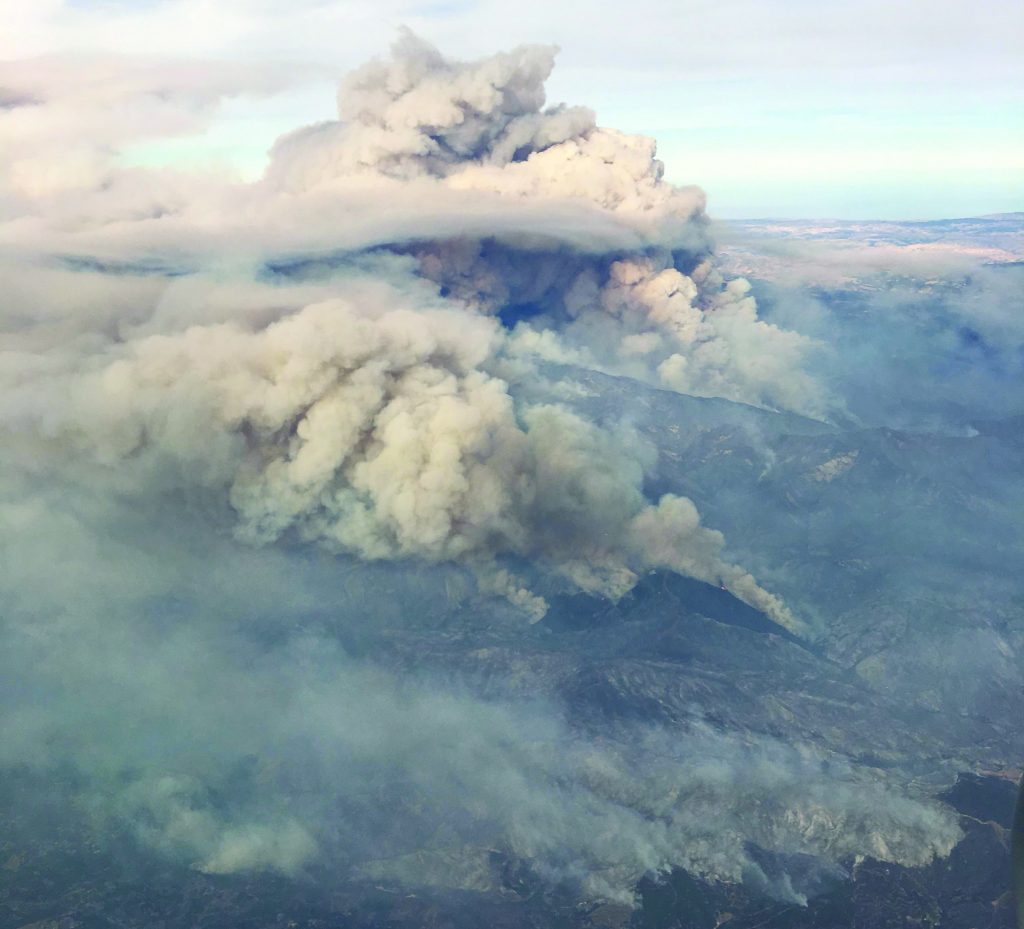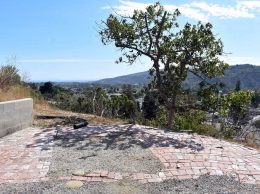Dubroff: A bird’s eye view of global warming

A massive plume of smoke rises above the Thomas Fire in Santa Barbara County.
Flying into Santa Barbara the afternoon of Dec. 10, I spotted an impressive plume of smoke rising from the Thomas fire near Carpinteria.
I leaned over to the window and took our Page One photo with my iPhone.
What I did not realize at the time was that I had witnessed a meteorological event known as a pyrocumulus cloud — a storm cloud created by the fire below.
Talking to fire experts, I learned that about the same time I took my photo, satellite images, photographers and experts like Ventura County Fire Capt. Kevin Riley were also documenting the pyrocumulus event.
The next question is whether my photo is further evidence of global warming.
John Mecklin, editor of the Bulletin of Atomic Scientists, believes that’s likely the case. He posted my photo on the Bulletin web site with the title “this is what climate change looks like.”
In an email exchange, he wrote that “climate modeling suggests that as the Earth warms, weather extremes will be exacerbated. This will mean that rain events will be exaggerated and droughts will be longer and harsher in some areas; in some of those areas, extended droughts and higher temperatures could help intensify wildfire.”
He also added a note of caution. “But many different factors play into the Thomas Fire being so large, and it’s always difficult to tie one extreme event — whether a hurricane or a drought or a wildfire — directly to climate change.”
UC Santa Barbara Professor John Bowers, who heads UCSB’s Institute of Energy Efficiency, has been thinking about the human impact as we all scurry to secure safe quarters and find N-95 masks.
“Climate change is clearly intensifying hurricanes, storms and fires. Our lives are changing as a result,” he wrote me in an email.
Michael Fromm, a meteorologist at the Naval Research Lab in Washington, D.C. didn’t offer a view on the climate change issue. But he said the Navy has been starting to count fire plumes and has been “surprised at how frequently they occur.” The Navy wants to know how fire plumes might impact a battlefield environment and has an interest in forecasting them, he said.
One of the things you learn quickly as a small business owner is that you don’t really ever get a vacation. It has become a rather unfunny joke at the Business Times that big fires always happen when I am out of town and the Thomas fire broke out when I was in Florida celebrating my mom’s 90th birthday.
I was flying back to the Central Coast when I shot the photo and I have wondered since how climate change will affect our business — with more severe fires, more fierce rain events and also more demand for news from our audience.
One person who is convinced that’s the case is Michael Bloomberg, the former New York mayor and financial news mogul who on Dec. 12 got 237 large corporations, including some oil companies, to sign on to an agreement to disclose more financial information related to climate issues.
His task force wants to encourage companies to quantify climate risks so investors will be able to understand challenges and take advantage of opportunities.
Speaking in Ventura after surveying the Thomas fire damage, Gov. Jerry Brown pointed out how unusual it was to be fighting fires at Christmas.
Fast moving fires that destroy property and kill people are “an example of what we can expect in the very near future.”
Scott Bachmeier, a researcher at the University of Wisconsin Cooperative Institute for Meteorological Satellite Studies, gets the last word. Whether for human reasons or natural reasons or both, he said via email, the earth is warming.
“During such warm phases, there will be regions that suffer through more extreme and prolonged droughts, and abnormal wildfire activity — and, unfortunately, California has been hit hard with both.”
• Contact Editor Henry Dubroff at [email protected].











